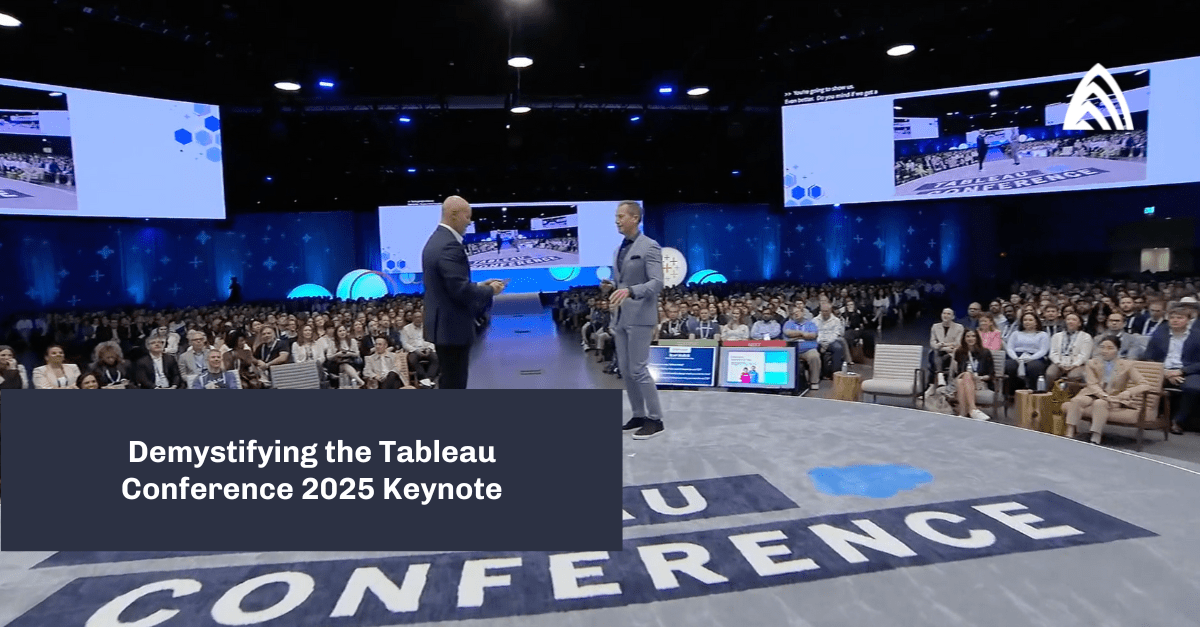To stay competitive, organizations today need more than basic data management — they need actionable insights. Together, Salesforce Data Cloud and CRM Analytics provide an integrated solution that brings customer data to life.
This powerful combination allows you to unify and harmonize your customer data from disparate sources and surface those insights within the flow of work, making it actionable in real time. Let’s dive into what makes both Data Cloud and CRM Analytics special, and how you can leverage these platforms together to transform your data strategy.
What is Salesforce Data Cloud?
Salesforce Data Cloud, an evolution of the former Salesforce Customer Data Platform (CDP), addresses the challenge of connecting vast amounts of non-standard data from multiple sources. It provides a comprehensive 360 view of each customer, allowing for personalized engagement at scale. Unlike traditional data warehouses or ETL tools, Data Cloud unifies and harmonizes customer data, providing a consolidated view that fuels informed decision-making.
Features of Data Cloud:
- Ingests billions of records quickly
- Harmonizes data to a standard data model
- Unifies data around a single customer ID
- Calculates customer insights and segments for action
- Activates experiences to Salesforce and other platforms
- Aligns with Salesforce metadata architecture
- Surfaces customer 360 insights via CRMA
Want to learn more about getting started with Salesforce Data Cloud? Download our whitepaper.
What is Salesforce CRM Analytics?
Salesforce CRM Analytics (CRMA) is an advanced visualization tool that brings data to life by surfacing insights from Data Cloud and other integrated sources. It can help you improve efficiency, boost revenue, and make better data-driven decisions. CRMA excels in providing real-time insights directly within the flow of work, so your teams have the information they need at just the right moment.
Benefits of CRMA:
- Increases efficiency. CRMA provides actionable analytics within the Salesforce workflow, eliminating “swivel-chairing” to work in other applications. The data finds you where you are, so important insights aren’t missed.
- Boosts revenue impact. Predictive prioritization means time is spent on the most important accounts and activities, and prescriptive guidance recommends the next best actions to improve revenue and outcomes.
- Amplifies proactive actions. Actionable and automated, every insight drives action (rather than ending at the dashboard). And up-to-date insights in CRMA allow leadership to provide data-driven actionable coaching.
Can you use Data Cloud and CRMA together?
To answer this question — yes! The combination of Data Cloud and CRMA is not only valuable, but it’s especially powerful for customer-centric use cases. By unifying customer data and providing real-time insights, these tools can empower your organization to deliver personalized experiences and optimize processes.
Whether it’s creating dynamic dashboards for sales reps or streamlining marketing efforts, the integration of Data Cloud and CRMA makes it easier to visualize data and take informed, meaningful actions. This combination is invaluable for any scenario where data unification and real-time insights are needed.
CRM Analytics + Data Cloud use cases
The use cases that make the most sense landing data in Data Cloud are those in which unification and standardization of data around an individual customer is key, and where you want to initiate an action related to that customer.
The combination of CRMA + Data Cloud works well when:
- You want to show 360 customer insights. Data Cloud focuses on customer-centric data while CRMA provides powerful visuals of all aspects of customer interactions.
- Unification is central to the visuals. The unique power of Data Cloud is identifying the same customer across multiple systems. CRMA + Data Cloud brings external data together in a way that makes sense and provides business value to users.
- You need embedded dashboards. CRMA direct queries to Data Cloud will auto-refresh when the record page is opened.
Here is a quick walk-through example of how you can use CRMA to activate customer data from Data Cloud:
Example of how a user can visualize data from Salesforce Data Cloud in CRMA and make it actionable.
By setting clear goals, defining key performance indicators (KPIs), and identifying compelling use cases, you can build a strong business case for adopting Data Cloud and CRMA together. This approach will not only help you secure the budget and resources for your analytics project, but also position your organization as a strategic player in your industry.
Atrium can help you leverage the power of CRM Analytics + Data Cloud
Salesforce Data Cloud and CRMA are powerful tools that can transform how your team understands and engages with customers. With the support of an experienced partner like Atrium, you can confidently navigate the complexities of data strategy and unlock the full potential of your data.
We offer a range of services, including use case discovery workshops, proof of value offerings, and pre-built analytics accelerators, to help you seamlessly implement these solutions and increase your data maturity.
Ready to get started? Visit our Salesforce consulting services page to learn more.








